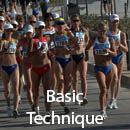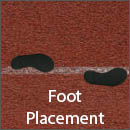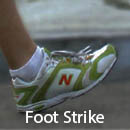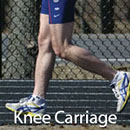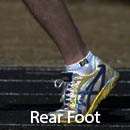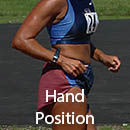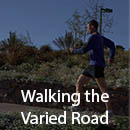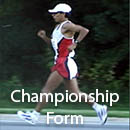Race Walking Technique
Adding the words “to the human eye” back into the definition makes judging more subjective. A race walker may lose contact with the ground as long as this lifting is not visible to the human eye. The problem occurs in defining what is meant by visible to the human eye. Observe the following walker:
.

Is this visible to the human eye?

Zoomed in view

Is this legal?
Zoomed in and frozen in time, it’s possible to see that the walker above has briefly broken contact with the ground; but can the human eye catch that in real time? Not likely. Therefore, she is not violating the definition and is legal.
I have argued elsewhere that if a videotaped walker is off the ground for one frame or less, the human eye cannot perceive the lift. My peers, however, may contend that less—or more—time is required to distinguish loss of contact. Thus is the case with all subjective rules. You might therefore reasonably conclude that the rule intends for flagrant lifters to be disqualified. Unfortunately, the definition of race walking is not that simple. For example, observe the photo to the right. Would you disqualify this walker? The question remains unanswerable based on a single photo. Always remember, the definition says to the human eye. There is no instant replay in race walking.If you are a beginning race walker, odds are you will not lift. Frankly, you are not walking fast enough. To be certain, videotape a workout from a side angle. Make certain the camera is a complete track-width away from you, and walk at race pace.
Study the tape one frame at a time. If you see a double support phase, you have nothing to worry about. In contrast, if you lift for two or more frames, a disqualification awaits in your future. The gray area is if you appear off the ground for only one frame. You probably will receive cautions, but hopefully not the three proposals for disqualification that lead to a removal from the race.









